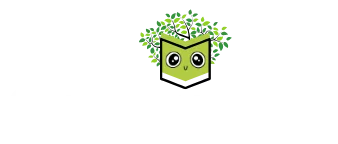Hummingbirds are nature’s little acrobats, flitting from flower to flower with the grace of a ballet dancer on caffeine. These vibrant creatures not only add a splash of color to any garden but also play a crucial role in pollination. But what keeps them buzzing with excitement? The answer lies in their favorite flowers, which are like a five-star buffet for these feathered friends.
If you want to turn your garden into a hummingbird hotspot, you’ll need to roll out the red carpet with the right blooms. From fiery red trumpet flowers to cheerful yellow columbines, certain colors and shapes are like a neon sign saying “Welcome, Hummingbirds!” Get ready to discover which flowers will make your garden the ultimate hummingbird hangout, and watch as these tiny marvels bring life and energy to your outdoor space.
Table of Contents
ToggleUnderstanding Hummingbirds
Hummingbirds play a vital role in many ecosystems as pollinators. They possess unique adaptations that allow them to feed on nectar from flowers efficiently. Their long, slender bills enable them to reach the nectar deep within tubular blossoms.
Colors significantly attract hummingbirds, especially vibrant shades like red, orange, and pink. These colors stand out in gardens, guiding the birds towards food sources. Shapes of flowers also matter; tubular flowers accommodate their feeding style and encourage them to linger for more nectar.
Hummingbirds possess a high metabolism, requiring them to consume nectar multiple times throughout the day. An average hummingbird feeds on 1,000 to 2,000 flowers daily to meet its energy needs. The feeding patterns influence which types of flowers should be included in gardens aimed at attracting these birds.
These remarkable birds can hover in mid-air, making them agile and capable of rapid movements. They often return to the same flowers they favor, displaying territorial behavior. Providing a plentiful supply of preferred flowers creates an appealing habitat, enhancing the likelihood of hummingbird visits.
Native plants often attract more hummingbirds than non-native varieties because they have co-evolved with these birds. Firebush, trumpet vine, and bee balm are excellent choices that thrive in many regions across the United States. Fostering a diverse garden filled with different flowering species sustains hummingbirds throughout their migration periods.
Creating a hummingbird-friendly environment involves more than just planting flowers. Utilizing feeders with sugar water also supports these energetic creatures. Using these techniques enhances the chances of witnessing their stunning displays throughout the growing season.
Importance of Flowers to Hummingbirds

Flowers serve as a vital resource for hummingbirds, acting as essential stops on their foraging journeys. These birds rely heavily on nectar, the primary food source, for energy.
Nectar as a Food Source
Nectar provides necessary sugars that sustain hummingbirds’ high metabolism. Each day, these birds consume nectar from 1,000 to 2,000 flowers. This frequent feeding not only supports their energy needs but also aids in pollination. Rich nectar concentrations found in long-tubed flowers, like trumpet creeper, attract hummingbirds effectively. Providing a consistent nectar supply is crucial in gardens aimed at attracting them.
Role of Colors and Shapes
Colors draw hummingbirds’ attention, with vibrant hues like red, orange, and pink being particularly appealing. These birds are less attracted to white or dull-colored flowers. Unique flower shapes, especially tubular ones, facilitate easy access to nectar. Such flowers complement hummingbirds’ long bills and enhance feeding efficiency. Integrating a variety of colorful, tubular flowers in gardens ensures a welcoming habitat for these vital pollinators.
Popular Flower Types
Flowers play a crucial role in attracting hummingbirds. Certain varieties draw these birds more effectively due to their vibrant colors and unique shapes.
Red and Orange Flowers
Red and orange flowers stand out as favorites for hummingbirds. Plants like bee balm and cardinal flower catch their attention due to their bright hues. These vibrant colors signal abundant nectar, enticing long-tongued birds to feed. Planting a mix of these bold flowers adds stunning visuals while successfully luring hummingbirds into gardens.
Tubular Flowers
Tubular flowers dominate the preferences of hummingbirds. Long, narrow shapes allow easy access to nectar, which is vital for their high-energy needs. Examples include trumpet vine and columbine, both known for their attractive structure. Encompassing various tubular options in garden designs guarantees an inviting space for hummingbirds to thrive.
Native vs. Non-Native Species
Native species often outperform non-native varieties in attracting hummingbirds. Local plants like salvia and firebush provide familiar food sources, enhancing foraging success. Adapted to local ecosystems, these plants support hummingbird populations effectively. Prioritizing native flowers in garden setups fosters a healthier environment and attracts more hummingbirds.
Tips for Planting Hummingbird-Friendly Flowers
Attracting hummingbirds requires thoughtful planning and care. Creating a welcoming environment greatly increases the chances of drawing these vibrant birds.
Choosing the Right Location
Selecting an optimal location enhances visibility and accessibility for hummingbirds. Gardens located in sunny areas often yield the best results, as these birds prefer warmth. Positioning flowers near natural shelter, such as trees or shrubs, provides protection and resting spots. Ensuring proximity to water sources can further entice them, as they need hydration alongside nectar. Spacing plants to allow for easy flight paths allows for unhindered movement between flowers.
Care and Maintenance
Regular care ensures that plants thrive and continue to attract hummingbirds. Watering deeply during dry spells promotes healthy growth, encouraging more blooms. Fertilizing with organic options can enhance nectar production without harming the birds. Deadheading spent flowers maximizes blooming potential, creating a vibrant display throughout the season. Monitoring for pests helps maintain plant health, preserving the beauty and attractivity of the garden.
Attracting Hummingbirds to Your Garden
Attracting hummingbirds involves creating an inviting environment with the right flowers and feeders. Utilizing their natural preferences enhances the chances of attracting these vibrant birds.
Setting Up Feeders
Setting up feeders strategically increases hummingbird visits. Position feeders in open areas with sunlight to ensure visibility. Use a sugar-water mixture, combining one part sugar with four parts water, to mimic natural nectar sources. Clean feeders regularly to prevent mold, maintaining a healthy feeding environment. Refill as necessary, ensuring a steady supply, especially during peak migration periods. Brightly colored feeders, particularly in red, draw hummingbirds’ attention, helping them locate food quickly.
Companion Gardening with Hummingbird Flowers
Companion gardening promotes biodiversity and attracts hummingbirds effectively. Incorporate flowers like bee balm and cardinal flower alongside nectar-rich plants to create a vibrant oasis. Select native plants, such as salvia and firebush, for a natural habitat that supports local ecosystems. Group plants in clusters to enhance visibility and accessibility for hummingbirds. Create varied heights in the garden, allowing for diverse feeding zones. Additionally, provide natural shelters like shrubs to offer resting spots where the birds can feel safe while foraging.
Creating a hummingbird-friendly garden requires thoughtful selection of flowers that cater to these remarkable birds. By focusing on vibrant colors like red and orange and incorporating tubular shapes, gardeners can effectively attract hummingbirds. Native plants often yield the best results, providing familiar food sources that support local ecosystems.
Regular maintenance and strategic planting enhance the garden’s appeal. Positioning flowers in sunny spots and near natural shelters encourages hummingbirds to visit frequently. With a consistent nectar supply and a welcoming environment, anyone can enjoy the beauty and joy these fascinating pollinators bring to their outdoor spaces.








